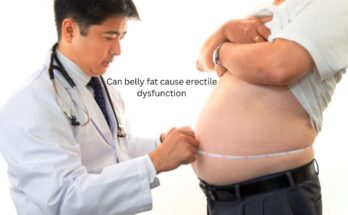Introduction
Belly fat is notoriously stubborn, and many people turn to running as a solution. But how long does it take to lose belly fat by running? The answer isn’t one-size-fits-all. While running burns calories and improves overall health, the timeline for losing abdominal fat depends on factors like genetics, diet, workout intensity, and consistency. This guide explores realistic expectations, actionable strategies, and the science behind running for belly fat loss.
Why Running Is Effective for Targeting Belly Fat
Running is a high-impact aerobic exercise that engages multiple muscle groups, elevates heart rate, and burns significant calories. It’s particularly effective at reducing visceral fat—the harmful fat surrounding internal organs linked to chronic diseases like diabetes and heart conditions. Studies show moderate to vigorous running sessions (30–60 minutes, 3–5 times weekly) can shrink waist circumference by 3–7% within 8–12 weeks. However, how long it takes to lose belly fat by running also hinges on your body’s response to exercise. For instance, individuals with insulin resistance may see slower initial progress than those with faster metabolisms.
Key Factors That Determine the Timeline
- Starting Weight and Body Composition:
Someone with a higher initial body fat percentage (e.g., 30%+) may notice belly fat reduction within 4–6 weeks of consistent running. In contrast, individuals closer to their ideal weight (15–20% body fat) might need 12–16 weeks to see visible changes. - Workout Intensity and Frequency:
High-intensity interval running (HIIT) burns 25–30% more calories than steady-state jogging. For example, alternating between 1-minute sprints and 2-minute recovery walks torches fat faster, shortening how long it takes to lose belly fat by running. - Diet and Nutrition:
No amount of running can outwork a poor diet. A calorie deficit of 500–750 calories daily is essential for losing 1–1.5 pounds of fat per week. Prioritizing protein (e.g., eggs, chicken, legumes) preserves muscle, while fiber-rich foods (vegetables, whole grains) curb hunger. - Sleep and Stress Management:
Chronic stress elevates cortisol, a hormone that promotes belly fat storage. Pairing running with 7–9 hours of sleep and mindfulness practices (yoga, meditation) accelerates results.
The Science Behind Running and Fat Loss
Running triggers Excess Post-Exercise Oxygen Consumption (EPOC), where the body continues burning calories for up to 24 hours post-workout. A 2021 study in the Journal of Sports Science found that runners who incorporated HIIT sessions burned 15% more belly fat over 12 weeks than those who stuck to steady-paced runs. Additionally, running suppresses appetite-regulating hormones like ghrelin, reducing cravings. However, how long it takes to lose belly fat by running also depends on genetic factors. Some people are predisposed to store fat in the abdomen, requiring longer, more strategic efforts.
Step-by-Step 12-Week Running Plan for Belly Fat Loss
Phase 1: Weeks 1–4 (Building Endurance)
- Workouts: 30-minute runs at a conversational pace (5 days/week).
- Goal: Build a habit and improve cardiovascular health.
- Sample Session: Warm up with a 5-minute walk, jog at 5–6 mph, and cool down with stretches.
Phase 2: Weeks 5–8 (Introducing Intervals)
- Workouts: 2–3 HIIT sessions weekly (e.g., 8 rounds of 30-second sprints + 90-second walks).
- Goal: Boost calorie burn and metabolic rate.
- Sample Session: Treadmill incline runs (5% incline) for 20 minutes to engage core muscles.
Phase 3: Weeks 9–12 (Advanced Training)
- Workouts: 45–60 minute endurance runs + 1–2 hill-repeat sessions weekly.
- Goal: Maximize fat oxidation and endurance.
- Sample Session: 10-minute warm-up, 30-minute tempo run (7–8 mph), 10-minute cooldown.
Following this plan, most people reduce belly fat by 2–4 inches within 12 weeks, answering how long it takes to lose belly fat by running for those committed to structured training.
Nutrition Strategies to Speed Up Results:

To complement running, adopt these dietary habits:
- Calorie Deficit: Track intake using apps like Lose It! or MyFitnessPal. Aim for 1,600–2,000 calories daily (adjust based on weight and activity).
- Macronutrient Balance:
- Protein: 30% of calories (e.g., 120g protein for a 1,600-calorie diet) to protect muscle.
- Healthy Fats: 25% of calories (avocados, nuts) to support hormone health.
- Complex Carbs: 45% of calories (oats, sweet potatoes) for sustained energy.
- Meal Timing: Eat protein-rich meals within 30 minutes post-run to aid recovery.
- Hydration: Drink 3–4 liters of water daily to optimize metabolism.
Skipping these steps can prolong how long it takes to lose belly fat by running, as poor nutrition undermines workout efforts.
Common Mistakes That Slow Progress
- Overtraining: Running daily without rest strains joints and spikes cortisol. Limit runs to 5 days/week, adding 2 days of strength training or yoga.
- Neglecting Strength Training: Muscle mass increases resting metabolic rate. Incorporate squats, planks, and deadlifts 2–3 times weekly.
- Inconsistent Routine: Skipping workouts or overeating on weekends stalls progress. Stay accountable with a workout buddy or fitness tracker.
- Focusing Only on Scale Weight: Muscle gain can mask fat loss. Track progress via waist measurements, progress photos, or body fat percentage tests.
How to Track Your Progress Accurately
- Weekly Measurements: Use a tape measure to track waist circumference. Aim for 0.5–1 inch loss every 2–3 weeks.
- Body Fat Scans: DEXA scans or bioelectrical impedance scales provide precise fat loss data.
- Fitness Milestones: Note improvements like running longer distances or faster paces, which indicate fat loss.
- Photos: Take front/side photos every 4 weeks to visualize changes.
Apps like Strava or Garmin Connect sync with wearables to monitor calories burned, heart rate, and running performance, offering insights into how long it takes to lose belly fat by running based on your data.
Realistic Timeline: What to Expect
For most individuals, how long it takes to lose belly fat by running spans:
- 4–8 Weeks: Improved endurance, slight waistline reduction (1–2 inches).
- 8–12 Weeks: Visible fat loss, clothes fitting looser.
- 12–16 Weeks: Significant abdominal definition (if combined with strength training).
However, those with hormonal imbalances (e.g., PCOS, thyroid issues) may need 6+ months. Consistency is critical—stick to your plan even during plateaus.
Conclusion:
Achieving Your Belly Fat Loss Goals
So, how long does it take to lose belly fat by running? While 8–16 weeks is a common range, your results depend on effort, diet, and biology. Pair running with strength training, a calorie deficit, and stress management for sustainable success. Remember, belly fat loss isn’t linear—stay patient, adjust your plan as needed, and celebrate small victories along the way.



